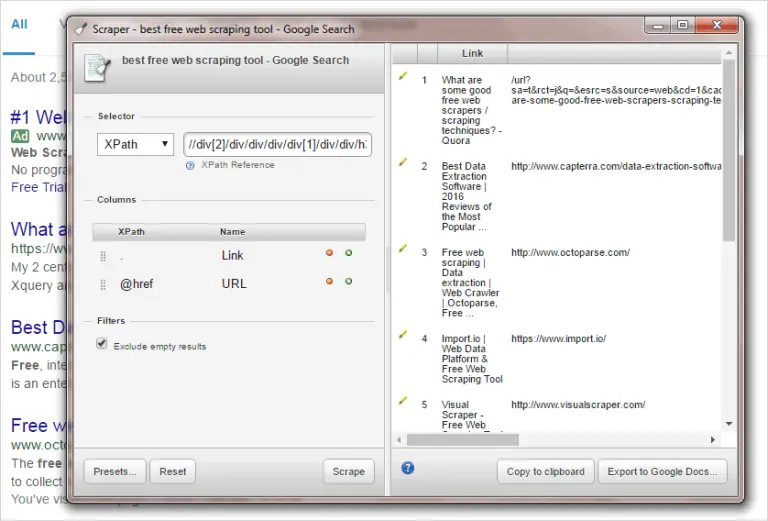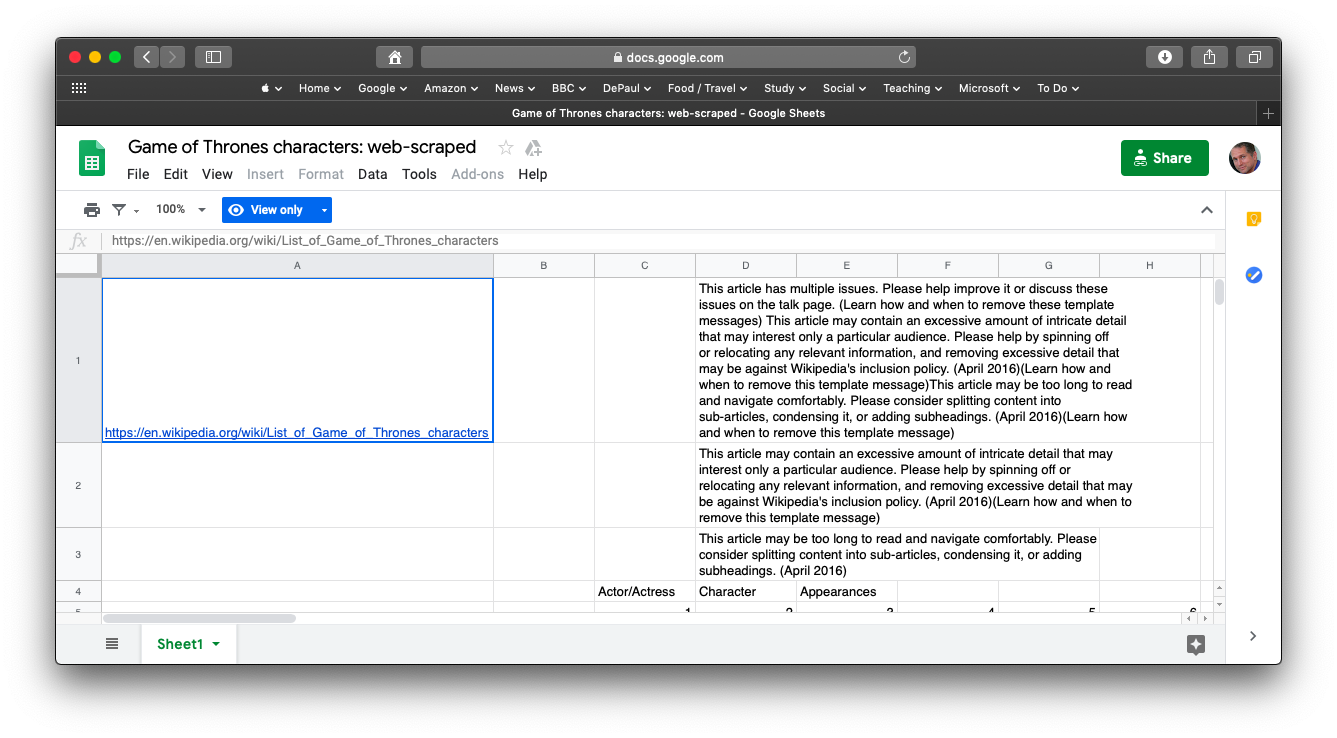
- #Webscraper xpath query how to#
- #Webscraper xpath query install#
- #Webscraper xpath query full#
- #Webscraper xpath query pro#
To test a sample, upload the associated report from the /samples/customDataSource/reports directory and view the report.Įach of the examples is described in the following sections. See the TIBCO JasperReports Server Administrator Guide for more information about creating data sources. Open the New Data Source page (for example, by selecting Create > Data Source for the main menu), enter the required values for the data source type you selected, and save the data source. Log on to JasperReports Server as an administrator. To test the samples and create or view reports : The example custom data source types are now available from the New Data Source page in JasperReports Server. Repeat this procedure for the sample in /samples/customDataSource-pro.įor the webscraper report example, you must register its query executer factory as described in Webscraper Custom Data Source.

See Files Used by a Custom Data Source Implementation for the final locations of the files in JasperReports Server The deploy target initiates these actions:Ĭompiles the Java source files under the src directory.ĭeploys the compiled Java class files to the web application.ĭeploys files under the webapp directory to the web application. Run the Ant command (as described in Prerequisites) with no arguments this executes the default target, which is named deploy.
#Webscraper xpath query install#
To install the samples in your JasperReports Server web application :Īt the command line, change directories to the custom data source sample directory ( /samples/customDataSource).Įdit build.xml and set the webAppDir property to the root of your JasperReports Server web application. Reports – A directory containing example JRXML files that use the sample custom data source types. Webapp – A directory containing other files required by the examples, such as JSPs and Spring configuration files, which are copied directly to the JasperReports Server web application directory.
#Webscraper xpath query how to#
Readme.txt – Text file describing how to build the examples. The /samples/customDataSource and /samples/customDataSource-pro directories include: Installing the Custom Data Source Examples The bundled Apache Ant is version 1.9.4 this version or higher is recommended. If you cannot find Ant on your system, you can download it from. Run Ant using the following command: Linux: The samples are supported only with JDK 1.6.Īnt is installed as part of the JasperReports Server installation process.
#Webscraper xpath query full#
Ensure that the JAVA_HOME environment variable points to a full JDK installation.

To work with the examples, you must install the Java Development Kit (JDK). The examples are provided as Java source files. To run the Ant script, you need the correct versions of the Java Development Kit and Apache Ant. The samples directories include an Ant script that compiles the Java code for the samples and places all the required files in the correct locations in JasperReports Server.
#Webscraper xpath query pro#
The examples include:Ĭustom data source pro with metadata support for Domains

Modify and test these samples to understand how to create your own custom data source. These samples are not intended to be used in production environments. These samples include both the JasperReports Library data source implementation ( JRDataSource) that contains the logic to access data and the interface to fill reports, and the implementation of ReportDataSourceService that allows the server to instantiate the JRDataSource at runtime. You can build and deploy the examples after you have deployed JasperReports Server. The WAR file installer includes several sample data source types in the /samples directory. Adding a Custom JSP Page in a Spring Web Flow.


 0 kommentar(er)
0 kommentar(er)
